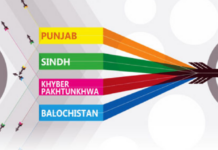The government’s net borrowing from the banking system for budgetary support has surged by 16.31% over the past year, reaching Rs31.133 trillion as of March 28, 2025, up from Rs26.766 trillion in April 2024, according to the latest data from the State Bank of Pakistan (SBP).
The increase underscores the government’s growing need for financial resources due to low tax revenues, weak financial inflows, and the ongoing requirement to service its debt.
The government borrowed Rs4.355 trillion from the SBP and Rs26.777 trillion from scheduled banks. The fiscal borrowings peaked at Rs30.842 trillion in mid-September 2024, coinciding with a record profit transfer of Rs3.42 trillion from the SBP, up from Rs1.142 trillion the previous year.
Despite a brief dip following the peak, borrowings continued to rise into early 2025, indicating that the government remains heavily reliant on the banking system for budgetary support.
The government regularly borrows from banks to meet debt obligations, including interest payments and principal repayments. Lower interest rates reduce borrowing costs, but the SBP has held its policy rate at 12% since last month, after reducing it by 1,000 basis points since June 2024.
The increase in borrowing comes at a time when the government is also negotiating with the International Monetary Fund (IMF).
Last month, Pakistan reached a staff-level agreement with the IMF for the first review of its ongoing $7 billion loan program. Additionally, the IMF agreed to provide $2.3 billion under the Resilience and Sustainability Facility (RSF), subject to approval by its executive board.























